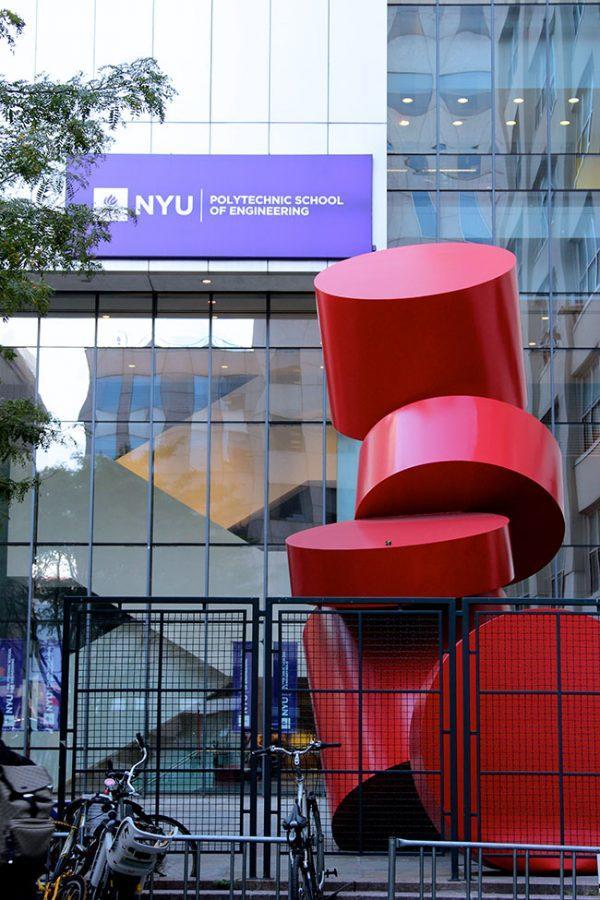Tandon Develops Hybrid Molecule for Breast Cancer Treatment
Researchers at NYU Langone have published a study going into depth about the ways in which a cancer cell can survive.
April 8, 2016
About one in eight women in the U.S. will develop breast cancer in their lifetimes. While death rates have gone down since the early 1990s, breast cancer still results in the second most deaths among women of any type of cancer, behind lung cancer. So far in 2016, researchers at NYU Langone’s Laura and Isaac Perlmutter Cancer Center and the Tandon School of Engineering have made serious strides in researching the disease.
Currently, breast cancer is treated by a combination of surgery, radiation therapy, chemotherapy and hormone therapy. The most common surgery is a mastectomy, in which part or all of the breast is removed. Certain factors affect a patient’s prognosis and treatment options, including the stage of the cancer, the speed at which the tumor is growing, the type of breast cancer and the woman’s age.
In January, researchers at Langone published the largest study of its kind detailing how genetic changes indicate weaknesses in a cancer cell’s ability to survive.
The data, based on a survey of 77 breast cancer cell lines, suggested new drug targets and combinations while identifying multiple previously known genes that are vital to specific breast cancer subtypes. The researchers were able to evaluate a vast amount of data, partly due to a new algorithm developed by bioinformatician Azin Sayad.
More specifically, they found drug targets and combinations to treat triple negative breast cancer, the deadliest of breast cancer’s forms, about which little is known. The results pointed to certain proteins that increase inflammation as targets and to BET- inhibitors as a potential drug to inhibit the growth of BRD4, a gene essential to a subset of triple negative breast cancer.
Benjamin Neel, the lead author of the study, said the most important takeaway from the study is that it provides a large database of data for other scientists to work with.
“These data are now available to researchers worldwide on the internet, so people can use the information for testing various hypotheses,” Neel said. “We are going to focus our future efforts on validating some of the ‘hits’ we have in triple negative breast cancer, which is the sub-type that has no targeted therapy at present.”
Along with Neel’s team, bioengineers at NYU Tandon have also made a significant contribution to breast cancer research this year by developing a hybrid molecule that may be able to treat the disease.
The molecule, known as P-GNP, is a nanocomposite of protein polymers and gold nanoparticles. Tandon professor Jin Kim Montclare, in association with researchers at Brooklyn College and the City University of New York, worked for three years to develop it. P-GNP is able to bind to and carry curcumin, an anti-inflammatory compound that inhibits cancer cell growth.
The team tested the molecule on the model breast cancer cell line, MCF-7. The P-GNPs, when compared to the protein polymers alone, increased curcumin binding seven times over and doubled in curcumin uptake.
Another impressive feature of the drug was its extended release.
“One of the problems with delivering drugs is that it’s challenging to control the delivery or release,” Montclare said. “A slow, extended release allows the controlled delivery of the drug for an extended period of time to better combat or treat the disease.”
Despite the successes of the study, she predicts it will be several years before the drug can be used on humans.
“We are only scratching the surface and really need to conduct a barrage of experiments before they can be used on humans,” Montclare said.
This said, P-GNP has potential beyond being a shipping container for curcumin.
Joseph Frezzo, a doctoral student who worked with Montclare, said Langone’s research with GNP could lead to many other practical uses of the protein.
“There are so many paths to take when working with protein-GNP,” Frezzo said. “We only explored the potential for drug delivery. GNPs themselves are being used in electronics, diagnostics and as sensors and probes. We don’t even know the best application yet.”
These studies show NYU’s continued commitment to fighting breast cancer. While a cure is still several years down the road, the findings can help point researchers in specific directions as they work towards discovering and improving treatment methods. Moreover, they can inspire collaboration between experts of different fields around the world.
Email Kyle Sturmann at [email protected].












































































































































